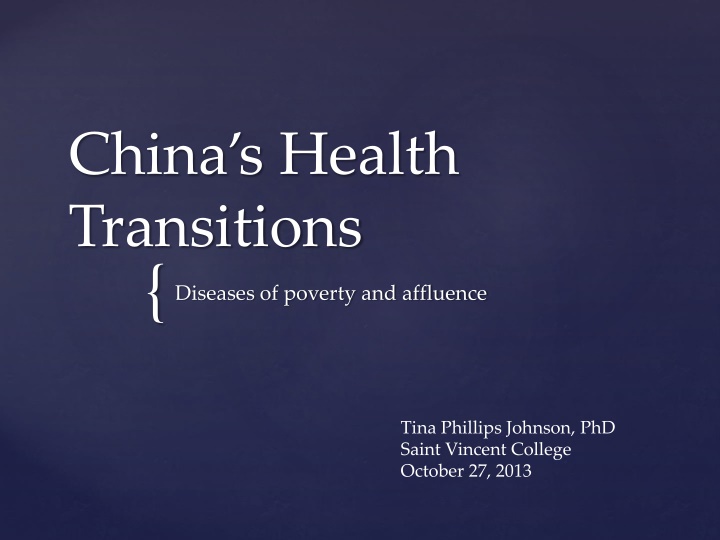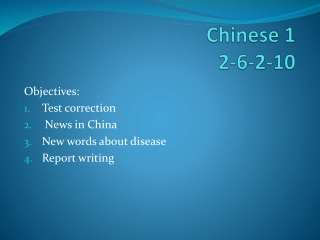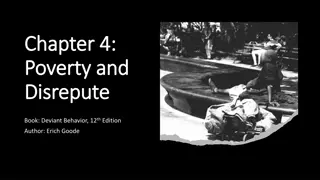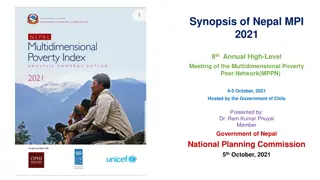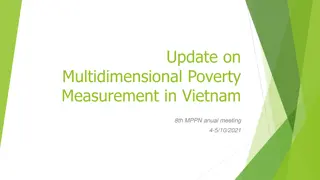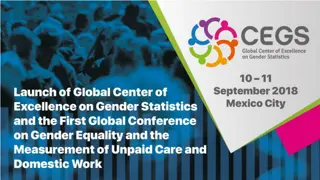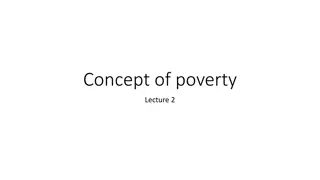China's Health Transitions: Diseases of Poverty and Affluence
China's health transitions encompass changes in medicine and population health, influenced by factors like demographic shifts, disease patterns, and societal determinants. Challenges with data accuracy and the country's 20th-century demographic evolution are highlighted, including issues related to skewed sex ratios, aging population, and rural-urban migration. Epidemiologic transitions from high mortality, infectious diseases to low mortality, non-communicable diseases are discussed in the context of China's evolving healthcare landscape.
Download Presentation

Please find below an Image/Link to download the presentation.
The content on the website is provided AS IS for your information and personal use only. It may not be sold, licensed, or shared on other websites without obtaining consent from the author.If you encounter any issues during the download, it is possible that the publisher has removed the file from their server.
You are allowed to download the files provided on this website for personal or commercial use, subject to the condition that they are used lawfully. All files are the property of their respective owners.
The content on the website is provided AS IS for your information and personal use only. It may not be sold, licensed, or shared on other websites without obtaining consent from the author.
E N D
Presentation Transcript
Chinas Health Transitions { Diseases of poverty and affluence Tina Phillips Johnson, PhD Saint Vincent College October 27, 2013
Health transitions Medical transitions are changes in the field of medicine. Health transitions are changes in the health of populations. Comprised of: Demographic transition: patterns of fertility and mortality Epidemiologic transition: patterns of disease
Health transitions shaped by: Direct health action Traditional and modern medicine Medical systems Social determinants of health Political stability Economic growth Literacy Education
Problems with data Data sources are variable by time and place Insufficient transparency National-level focus Skewed data Disease epidemics Invasion, war, conflict Famine
Chinas 20th-century demographic transition Population tripled in 20th century Estimated 430 million 1900; 1.3 billion 2000 Birth and death rates dropped 1950-2000 Population policy 1970-79: Voluntary late, long, few policy Fertility rate halved from 5.2 to 2.9 Due to: Universal education Improved child survival Greater gender equality Wang 2011
Demographics (cont.) Skewed sex ratio 1.06 in 1979 1.11 in 1988 1.17 in 2001 Problems? Trafficking of girls Commercial sex work industry STDs Davin 2007
Demographics, cont. Aging population 5% >65 years in 1982 7.5% >65 years in 2012 >65 expected to rise to more than 15% by 2025 Rural-urban migration 12% urban in 1950 50% urban in 2012 Davin, 2007
Figure 3 Age structure of China (1950, 2010, 2050) Source:(United Nations 2011)
Epidemiologic Transition Shifts in burden of disease High fertility, high mortality (pre-transition) Characterized by infectious disease High fertility, low mortality (transition) Medical advances prolong life expectancy Low fertility, low mortality (post-transition) Increased life expectancy, medical advances, chronic disease Omran 1970
Crude birth rate (), crude death rate () and % urban population 45 0.5 0.45 40 0.4 35 0.35 30 0.3 25 One child policy 0.25 20 0.2 15 0.15 10 0.1 5 0.05 0 0 1950 1975 1980 1985 1990 1995 2000 2005 Crude Birth Rate Crude Death Rate % urban population Chen 2013
Burden of Disease (DALYs) in world regions, 2004 (Low- and middle- income countries grouped by WHO region, 2004) 600 80 71 70 71 500 67 62 60 63 400 50 49 300 40 30 200 20 100 10 0 0 Africa East MED SEA Europe Americas Western Pacific Communicable diseases NCDs Injuries Life Expectancy DALY: Disease-adjusted life year; The overall disease burden, expressed as the number of years lost due to ill-health, disability or early death.
Chinas double burden of disease Infectious diseases and epidemics Chronic and man-made non-communicable diseases
Works Cited Chen L. China s Exceptional Health Transitions: Overcoming the Four Horsemen of Apocalypse. 2011. Davin D. Marriage Migration in China and East Asia. J Contemp China. 2007;16(50):83 95. Ho CS, Gostin LO. The Social Face of Economic Growth: China s Health System in Transition. JAMA. 2009;301(17):1809 11. Liu Y, Yang G, Zeng Y, Horton R, Chen L. Policy dialogue on China s changing burden of disease. The Lancet. 2013;381:1961 62. Omran, AR. The epidemiologic transition. A theory of the epidemiology of population change. Milbank Memorial Fund Quarterly. 1970; 49.4:509-38. Wang F. The Future of a Demographic Overachiever: Long-Term Implications of the Demographic Transition in China. Popul Dev Rev. 2011;37 (Supplement):173 90. Yang G, Zeng Y, Gao GF, et al. Rapid health transition in China, 1990-2010: findings from the Global Burden of Disease Study 2010. The Lancet. 2013;381:1987 2015.
